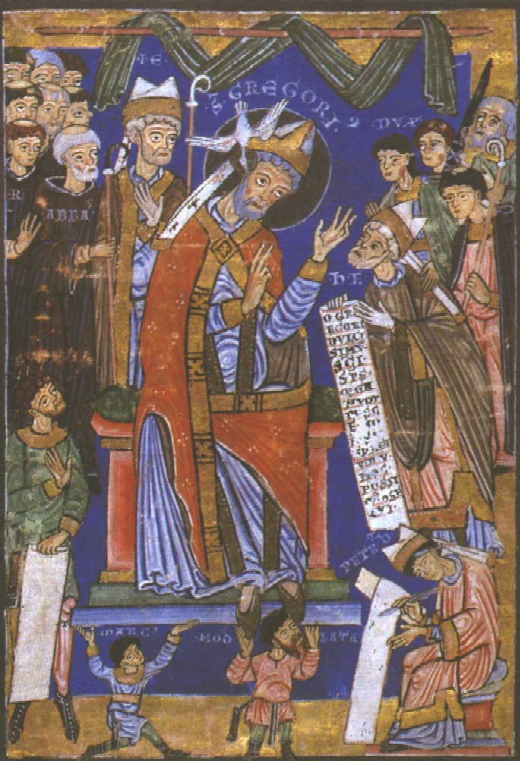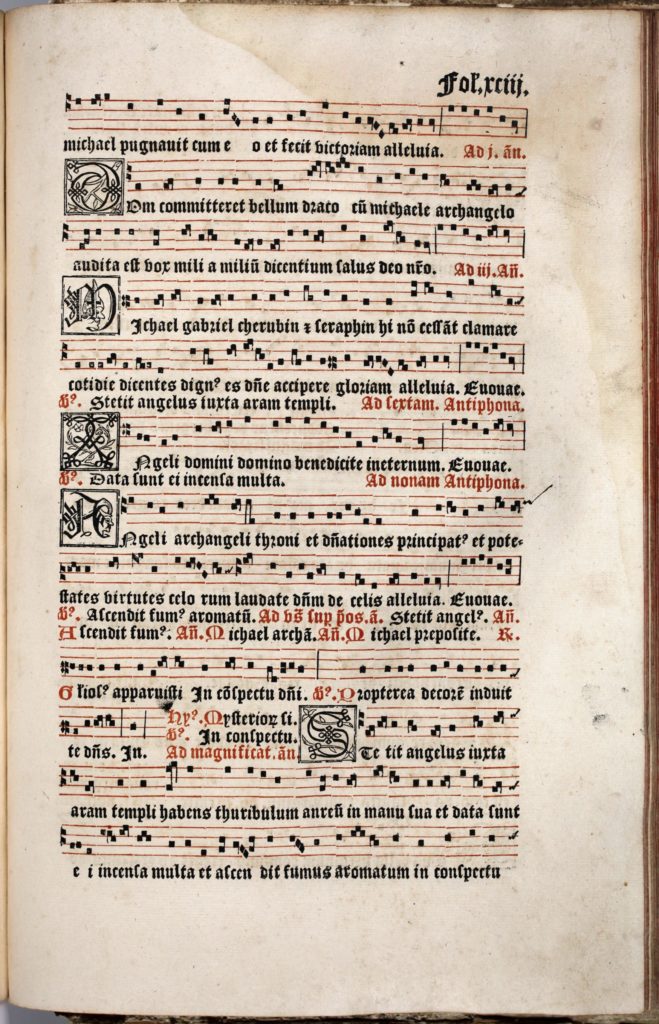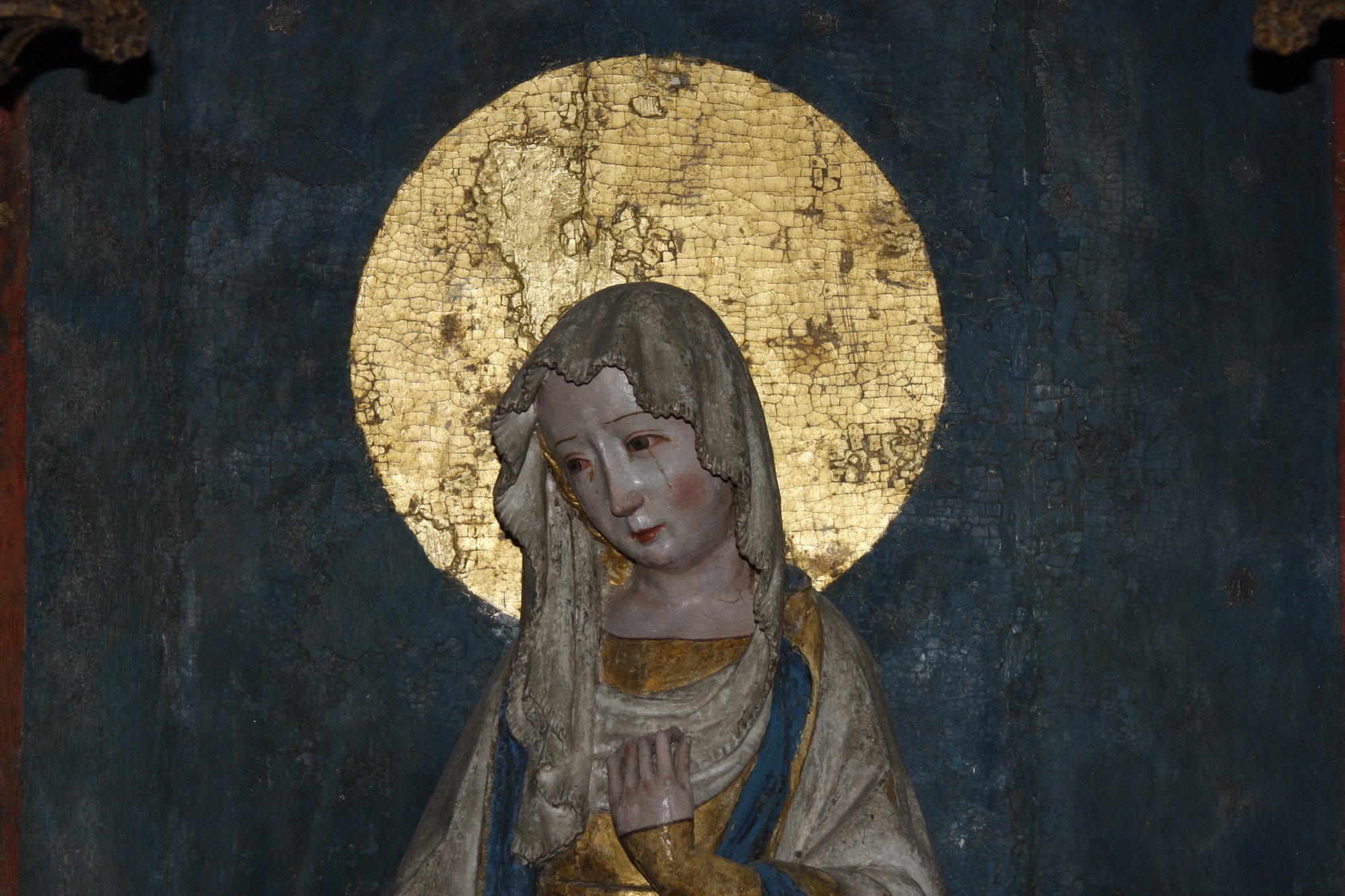The concept of Gregorian song is first mentioned during the 9th century. It did not have any artistic value, but was only meant to serve liturgy at mass and canonical hours. Emphasize was put on the lyrics, not the music. If the texts were well sung, they were considered to better stand out in music than in speech. All sings were sung in Latin.


Gregorian song is what the name implies, a musical style that consists of only song. It is a kind of choral singing which was performed by Christian monks during the Middle Ages. It was developed during the 6th century, but originally came from the Jewish services.
It was Pope Gregory I who wanted that all abbeys should have a standard repertoire with songs. He assembled numerous singers and founded a choir school, Schola Cantorum in Rome, where monks could practice in singing. He also established an order, a liturgy, for how the services were to be conducted. By his death in 604, the Gregorian song was made famous through monks wandering in Europe, and it made its way to Sweden assumable by monks from Great Britain. During the 6th century it was not possible to write down the melodies, it was only by listening that they were spread further.
One of the pictures above shows how the Holy Spirit in shape of a dove sings in Gregory’s ear, and how he forwards this to a writer.
Around the year of 1000, there existed a simple notation, i.e. neumer, a sort of simplified musical notation, showing the melody going up or down. The notation was made on large sheets of paper, so that many people could sing together. Eventually this notation was developed to also include time values for notes, four lines of notes, as well as whole and half notes. Melodies were written in so-called ecclesiastical keys, there was eight, which were separated by placing half tones into the scale. Major and minor were unknown terms for this music.
The way of singing is characterized by singing unanimously. However, during the latter part of the Middle Ages some songs were also sung in simplified harmonies. The rhythm was free and should fit the text that was extracted from the Book of Psalms, with short refrains of Alleluia, Amen, Gloria Petri, between the verses.
The song was sung without any instruments, and it was a very important part of the liturgy. Initially it was an introit between a choir leader and a singing group, but there were also antiphons between two educated groups (antiphonal song). In Cistercian abbeys, the songs were the most important part during canonical hours, the eight daily times of prayers.
Within the Catholic Church, Gregorian songs are stilled being performed in churches and abbeys in their original fashion. In Swedish abbeys, texts were often translated to Swedish, but the old notation is still being followed. Within the Protestant church the songs are also used in mass, both in its original form and in a reworked version. They are known as the old church and are sung in Swedish.
The visualization program depicts the environment during autumn. In the church of Askeby abbey, Inger Rislund, Bodil Söderberg, Bodil Hedman, and Viveka Hedman sing the Gregorian song, Die 29, Septembris In Dedicatione S Michaelis Archangeli. The text of the antiphon is extracted from the Antiphonarium Cisterciense. It has belonged to the Polish Cistercian abbey in Pelplin and is now included in the collections of the Diocese library of Linköping.
Listen to the song below, accompanied to a timely prayer, Tierce, on the day of Holy Michael. You will then hear the antiphon of that timely prayer and psalm 119, verse 33-41, from the Book of Psalms!
